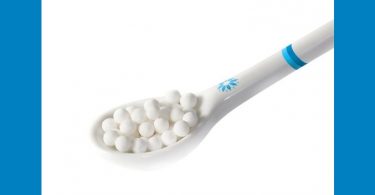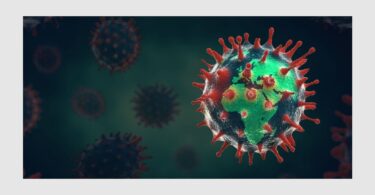
Most of us have adapted to the diverse way of practising that the recent pandemic has forced upon us. Various digital platforms have enabled the profession to continue to ‘take the case’ and prescribe accordingly.
The telephone has also provided a means to communicate when the patient is unable to use other means. Teaching from Allen College also continued throughout those years of uncertainty and confinement with all concerned logging on and joining in via the chat box or later having the confidence to ‘unmute’and speak.
The clinical course in Kolkata was suspended for two years because with the varying environments in which clinics are held, they are not conducive to online communication. The slum, the rural clinics and even the contact with the pathology in the classroom would not be conveyed through a streaming service. So finally after a two year break, we welcomed participants from Japan, U.S A, Ireland, South Africa, Mumbai, Punjab, Orissa and Andra Pradesh.

Concentration
The medical doctor from Hyderabad commented how embarrassed he was about prescriptions for fever, for example, and the approach of one size fits all. He was impressed by the diligence of finding the correct similimum. He vowed to leave pharmaceutical practice when he feels confident enough with the individualised approach.

Dr Banerjea Examining
Having been to many other courses in both the U.K and Mumbai the Irish participant was overwhelmed by the generosity of knowledge and skills that were shared. The structure of the course and the structure of prescribing has reinstated his commitment. He said he had lost his way but fallen in love with homoeopathy again after this course.

The homoeopaths are encouraged to record ‘clinical tips’ (historically in a book, but now I note electronic devices). Certainly the compilation of notes bulges with new information about polychrests and ways of viewing the words in materia medica, the implementation of tinctures in drug dependent cases and small medicines which can revive the case when apparently ‘stuck’.

Clinical Explanation

Taking Notes

Checking the Materia Medica

The waiting room
The course is only possible by the big heartedness of the patients who enjoy sharing their story and changes in health from the homoeopathic treatment they receive. For those of you who know the course, or have read about this course, a reminder that patients travel long distances.
Those that strike me as being committed are those of low income whose journey is an extraordinary expense, arrive from 800 miles away having spent the night at Howrah railway station before arriving at the clinic for a shower before their appointment. Others travel on coaches and others fly. It is evident that person to person communication is after all irreplaceable.

Sharing symptoms

Patiently waiting
There was a plentiful scattering of leading questions (see Aph. 87). I was requested to take new cases to demonstrate Aph. 83 – Aph. 105, however I could not speak the patients’ language, so engaged the help of the students who spoke both Hindi and Bengali.
One of the cases was most confusing, with a pain from front to back of the abdomen before having a cyst removed from the pancreas. However, on a re-take he was insistent it was on the left and it was gall stone surgery.
We spent time trying to clarify and the more we asked, the more confused the symptoms became. It may have been a shyness or an attempt at pleasing us all. (Aph. 97) We concluded it was not the confusion of language but a case of Pulsatilla as described in Nash’s Leaders in Homoeopathic Therapeutics.
‘Nash-‘We sometimes have patients come to the office and find, in trying to take their case, no ‘head or tail’ to it. It is mixed’. The suffering and pain is now here, now there. The symptoms are contradictory, as we term them. This condition should always call attention to Pulsatilla and it will often clear up and cure the case.’

Calc Iodum
START HERE
We heard a long narration of thanks and gratitude from a parent of a boy with brain damage from birth. The boy who is now 12 years old was independent and achieving an average of 76% at school after the consultant at the allopathic hospitals gave no hope.
The touching thing was not the previously prepared written oration but the son’s obvious embarrassment from his father’s behaviour. He was squirming on the seat just as you might imagine a 12 old to do. It demonstrated how well his development of emotional and intellectual capacity had improved from the initial condition when he had little or no interaction with his surroundings.
The case had taken time, but with patient and infrequent repetitions of Calc Iod the family had a son who was integrating so well after being given a dismal prognosis from the paediatricians.

Rural Camp-Kakdwip
One of the challenging days was the visit to the rural camp where 40 cases were seen and explained. The greatest challenge was the cacophony of noise emitted by speakers at a nearby football game. The speakers were encouraging the teams but definitely making it hard work the clinic. However, after numerous requests the noise was eventually subdued enough to finish the day more comfortably.
Ammoniacum Dorema was given to a child of 9 years who had a weak constitution and persistent rattling mucus after the change of season. He was sensitive to cold and had tough, hard mucus. Other homoeopaths who had tried Antimonium Tart, Natrum Sulph etc, had failed to make a change. Continued improvement was evident after Ammoniacum Dorema.
Lyssin (Hydrophobinum, a deep acting nosode, was prescribed for a boy with severe autistic tendencies, including restlessness and hypersensitivity. His characteristic symptom was shouting and agitation when nervous. The doctrine of Lyssin we are familiar with is the dog barking (shouting) when nervous or startled.
Oleum Santali was given to a patient with slow flow of urine from bilateral hypertrophy of the prostate. Other prescriptions from around the city included Conium, Causticum, Sarsaparilla and Thuja. Success from the small remedy.
Medorrhinum was given to a 35-year-old man who confessed to having a bizarre cruelty to animals which included a compulsive desire to squash insects and kick dogs. His joint pain was not relieved by Rhus Tox or Phytolacca but given the newly admitted symptom, Medorrhinum was prescribed with confidence.
Natrum Iod was the choice for a young patient with a uterine tumour confirmed by sonography. Her case had features of retention, swelling of the foot, generalised oedema and constipation. Her history included grief from loss of her father 7 years previously and consequent headaches. She never speaks of her grief so we term it ‘silent grief’. Hot patient, oily face and felt much better in open air. She had a history of glandular swelling at each slight infection which justifies the Iod component of the prescription.

Sharing Symptoms
The participants were reluctant to leave the classroom at the end of the day and frequently stayed on for an hour or so before leaving for dinner together. I conclude:
The members of the 2023 group have
- a revival of interest,
- revisited the Materia Medica
- restored their confidence.
- renewed their knowledge.
Diverse experiences, cultures and personalities under the canopy of a shared passion in The Healing Art.

Janet Banerjea RSHom
February 2023
January 2024 Dates: 22nd January 2024 to 2nd February
Clinical Training:
https://allencollege.co.uk/calcutta-clinical-training/
Clinical Training Calcutta
https://www.homoeopathy-course.com/courses/india






